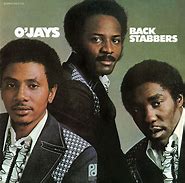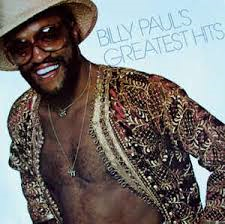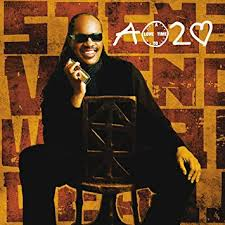
Rhythm Divine 2 (Dino 1991)

I did own this CD compilation’s predecessor, the unsurprisingly named Rhythm Divine on vinyl. There were quite a lot of tracks squeezed on over four sides and that compression and the fact that it was in the latter days of vinyl when the industry wanted everyone to purchase CDs meant that the sound was a little flat compared to the original singles and it wasn’t an album I played too often. The follow-up I purchased on CD and because it was the second in the series the selections were less obvious, the sound was beefed up for the CD format and it became an album I played a lot. We are back again on the dance floor with tracks dating from 1968-84 with the emphasis on the funkier, more soulful side of disco. There are tracks which overlap with other of my Essential CDs compilation choices, eight of the 34 on show here spread out between Disco Classics, Funk Soul Anthems and Native New Yorker but there is plenty new here to provide a joyful couple of hours revisiting tracks from my youth. With these essential compilation CDs it is important to know what tracks can be found on them so here you will find them listed with their highest chart position (UK/US) if released as a single and links if I have more information on the artist elsewhere on the blog and once again I’ll pick out a handful of tracks to give a flavour of what makes these CDs essential.
Track Listings
CD 1
1.Dance To The Music – Sly & The Family Stone (1968) (UK#7, US#8) (also on “Disco Classics”)
2. Shake Your Body (Down To The Ground) – The Jacksons (1979) (UK#4, US#7)
3. That Lady – Isley Brothers (1973) (UK#14, US#6)
4. Best Of My Love – Emotions (1977) (UK#4, US#1) (also on “Disco Classics)
5. Backstabbers – The O’ Jays (1972) (UK#14, US#3)
This features one of the greatest introductions in soul music, a melodic swirling, menacing yet absolutely lovely example of the Philadelphia International house orchestra MFSB before the O’Jays make their entrance with their emphatic “what’re they saying”. This was the first hit for soul trio Eddie Levert, Walter Williams and William Powell and as far as I am concerned it was never bettered, a musical warning about those who will talk about you behind your back. This year Levert, Williams and Eric Nolan Grant released what they say will be their final recording entitled “The Last Word” which was a great way to round-up the group after 61 years together for the two originals and which felt like a tribute to the quality of the music of the past with enough of a contemporary feel to make it a relevant soul music release.

6. Rock Your Baby – George McRae (1974) (UK#1, US#2) (also on “Disco Classics)
7. That’s The Way I Like It – KC & The Sunshine Band (1975) (UK#4, US#1)
8. Boogie Oogie Oogie – A Taste Of Honey (1978) (UK#3, US#1)
I had a friend who worked in the record department of WH Smith and in those days they used to put out the Top 20 charts on a peg board using plastic letters. There were obviously a lot of “o’s” both in this song title and in the charts one week and she found that they had run out so had to put this up on the board as “Bogie Ogie Ogie” which she got her a telling off from the shop manager (bogie being an unacceptable word for WH Smith to have on display in the 70’s) but it is how I have always thought of this song since. A Taste Of Honey featured a unique double of female vocalists and guitarists Carlita Dorhan and bass player Janice Marie-Johnson. In 1978 it was still unusual to see female artists playing and performing which made A Taste Of Honey seem like the sound of the future and this first single release was a huge seller and gained the group a Grammy. Sadly, they struggled with follow-up material and the group dwindled down to a duo. In the UK they are officially one-hit wonders but Dorhan and Johnson managed three years later to get back into the US Top 3 with a ballad cover of the Kyu Sakamoto hit “Sukiyaki”. They will always be remembered for this hook laden, funky slab of disco which had the feel of Chic with the girls emulating the guitar-rich sound of Nile Rogers and Bernard Edwards.

9. Car Wash – Rose Royce (1976) (UK#9, US#1) (also on “Funk Soul Anthems”)
10. I Will Survive – Gloria Gaynor (1979) (UK#1, US#1)
11. When Will I See You Again – Three Degrees (1974) (UK#1, US#2)
12. Contact – Edwin Starr (1979) (UK#6)
Ex Motown artist Edwin Starr re-emerged in the late 70’s on the 20th Century label and scored a big European hit. His US hits had dried up not long after his chart-topping “War” in 1970 and within a couple of years he decided to relocate to the UK, where he would stay until his death in 2003. Amazingly, this did not cross over to the pop charts in any big way in his homeland despite topping Billboard’s US Disco chart. It’s a big, chunky production which suits the stridency of the great Starr’s vocals. His Motown hits were great but I have always loved this reinvention of his sound on this track.

13. This Is It- Melba Moore (1976) (UK#9)
Songwriter/producer Van McCoy’s work always really succeeded when there was a strong voice which could cut through the natural sweetness of his productions. There was no way his string laden orchestra could dominate Melba Moore (nor David Ruffin who he also worked with around the same time). Melba’s voice had the experience of both gospel and Broadway and fitted perfectly into this joyous number. Music was in Melba’s genes, her mother was R&B singer Bonnie Davis who had topped the R&B charts and her father sax player and band leader Teddy Hill. The always critically acclaimed Moore has never had a pop hit in the US. In the UK chart success continued in the early 80’s when she scored another couple of Top 40 hits “Love’s Coming At Ya” (#15 in 1982) and “Mind Up Tonight” (#22 in 1983) and became one of the leading lights in the “Quiet Storm” soul ballad revival in the early/mid 80’s which saw a duet with Freddie Jackson top the R&B charts. Melba is still going strong today but there is no doubting this is her finest moment. Dannii Minogue’s 1993 revival of the track introduced the joyfulness of this to a new generation and saw the song back in the UK Top 10.

14. More More More – Andrea True Connection (1976) (UK#5, US# 4)
By the mid 70’s in the US porn had gone mainstream and its stars, especially Linda Lovelace had become household names. The overlap between sex and disco which found success in tracks such as Donna Summer’s “Love To Love You Baby” tempted some adult movie actresses into the recording studio. The most successful of these was Andrea True. The story goes that Andrea found herself in Jamaica after an attempted coup which meant that money could not be taken out of the country. True had to spend her earnings and decided to fly in producer Gregg Diamond to make a record with her. Remixed by Tom Moulton and sporting an unforgettable “pop pop” sound “More More More” became a huge hit worldwide. It’s lyrics “keep the action going/keep the cameras rolling” reference her alternative career in a way which would not cause offence and would see the song covered successfully in later years by Rachel Stevens (#3 2004) and Bananarama (#24 1993). Andrea True was not a great singer but she did have some great songs in the early years of her career and is very under-rated as a music artist. I love the almost relentless latin flavours of “NY, You Got Me Dancing” and the disco pick-up of “What’s Your Name What’s Your Number” which gave her a second UK Top 40 hit two years later. Also tracks such as “Keep It Up Longer” and “Party Line” are certainly worth seeking out. Of her former film career I know nothing!

15. Heaven Must Be Missing An Angel – Tavares (1976) (UK#4, US#15) (also on “Disco Classics)
16. Rock The Boat – Hues Corporation (1974) (UK#6, US#1) (also on “Native New Yorker”)
17. Hang On In There Baby – Johnny Bristol (1974) (UK# 3, US#8)
Here’s a man who should have become a household name. A Motown songwriter and producer (often with Harvey Fuqua) Bristol worked on all time classic tracks by Marvin Gaye and Tammi Terrell, Edwin Starr, David Ruffin and Jnr Walker and the All Stars and as a vocalist is the male voice featured on Diana Ross and The Supremes’ swansong “Someday We’ll Be Together” which he also produced and co-wrote. By 1974 he had signed a solo contract with MGM and the success of bedroom based songs by male R&B stars such as Marvin Gaye and Barry White led to this recording which combines some fairly cheesy lyrics which turns love-making into a life or death situation with thunder roaring and lightning striking as Bristol gets it on with his “sweet virgin of the world” with a great production and a real hook laden song which is just irresistible. UK cool boys Curiosity Killed The Cat dropped most of their name for a comeback single in 1992 (as “Curiosity”) and matched their highest ever chart placing (as well as the UK chart position of Bristol’s original) with a cover of this. Bristol, maybe because of difficulties at the MGM label struggled to get his follow-up compositions to chart, although one of these “Love Me For A Reason” became a UK#1 when covered by The Osmonds. There were glimmers of potential success, a duet with Amii Stewart in 1980, a stint working with Ian Levine in the UK in the late 80’s but he just couldn’t follow up his classic hit. He passed away in 2004.

18. Right Back Where We Started From – Maxine Nightingale (1975) (UK#8, US#2)
CD 2
1.Celebration – Kool & The Gang (1980) (UK#7, US#1)
2. Don’t Stop The Music – Yarborough & Peoples (1980) (UK#7, US#19)
Although they sound like a firm of solicitors Texans Cavin Yarborough and Alisa Peoples were childhood sweethearts who signed with the Total Experience label and this was their debut hit which is both funky and wacky with speeded up voices for which they would often use puppets when performing “You don’t really want to stop! No!“. Maybe this shifted them into the novelty act category in their homeland where this was their only Top 40 hit. In the UK they had another three singles which made the Top 75 over the next 6 years, one of which (“Don’t Waste Your Time”) reached 48 in the US coming closest to giving them a follow-up hit in 1983. They eventually tied the knot in 1987 after which they set up their own music production company.

3. Use It Up And Wear It Out – Odyssey (1980) (UK#1)
4. Shame – Evelyn “Champagne” King (1978) (UK#39, US#9) (also on “Native New Yorker”)
5. Don’t Take Away The Music – Tavares (1976) (UK#4, US#34)
Two of the very best Tavares track on these CDs. This was another Freddie Perren production which closed their most successful album “Sky High” which had also featured “Heaven Must Be Missing An Angel.” and “The Mighty Power Of Love”. This is their Tavares at their most singalong, which is no way a criticism, as anyone who has heard me belting this in the shower would be able to testify. Great track which matched the success of “Heaven” in the UK but which fell a bit short in their homeland.

6. Swing Your Daddy – Jim Gilstrap (1975) (UK#4)
7. Be Thankful For What You’ve Got – William De Vaughan (1974) (UK#31, US#4)
8. Respect Yourself – The Staple Singers (1971) (US#12)
9. And The Beat Goes On – The Whispers (1980) (UK#2, US#19)
10. Love Town – Booker Newbury III (1983) (UK#6)
11. Somebody Else’s Guy- Jocelyn Brown (1984) (UK#13) (also on “Funk Soul Anthems”)
12. Change Of Heart – Change (1984) (UK#17)
13. Burn Rubber On Me (Why You Wanna Hurt Me) – The Gap Band (1980) (UK#22)
14. You Gave Me Love – Crown Heights Affair (1980) (UK#10)
A veteran group by the time they notched up this UK Top 10 hit Brooklyn based group Crown Heights Affair had been around since the late 60’s and were one of the early leading lights of Disco in the mid 70’s with tracks such as “Dreaming A Dream” and “Dancin'” lengthy workouts which became club classics without making the commercial breakthrough the band would have hoped for. This came in 1978 with their excellent space-flight track “Galaxy Of Love” (UK#24). Their 1980 commercial peak was with this track which was not as good but does have a very memorable driving vocal hook “do doo doo doo doo doo” which lifted them into the Top 10 for the only time in their career.

15. The Message – Grandmaster Flash & The Furious Five (1982) (UK#8)
Look at the chart placings. This seminal slab of hip-hop which took the to this point recent phenomenon of rap music to a new level was not even a US hit. The US charts have been full of rappers for years and Grandmaster Flash is arguably the Grandaddy of them all. Up until this point rap music had the hint of novelty about it stemming from labelmates The Sugarhill Gang and “Rapper’s Delight” with its one-upmanship which sounded fresh but a little trivial but here in the charts and on the radio was as the title rightly termed a “Message”. What we were being told about here was injustice and prejudice and R&B music shifted from this point onwards things would never be the same again. It’s up there with my favourite hip-hop records joined near that pole position by a track a year later when Grandmaster Flash joined forces with Melle Mel for the anti-drug epic “White Lines” which got to number 7 and hung around the UK charts for almost a year, although the power of this track was diluted by a pointless 1995 cover by Duran Duran.

16. I Found Lovin’ – The Fatback Band (1984) (UK#7)
Rhythm Divine 2 can currently be purchased on Amazon in the UK for £4.07 new and used from £1.54.







































































 Get back on that sofa James and Beverley!
Get back on that sofa James and Beverley! Gillian Gilbert and Stephen Morris
Gillian Gilbert and Stephen Morris